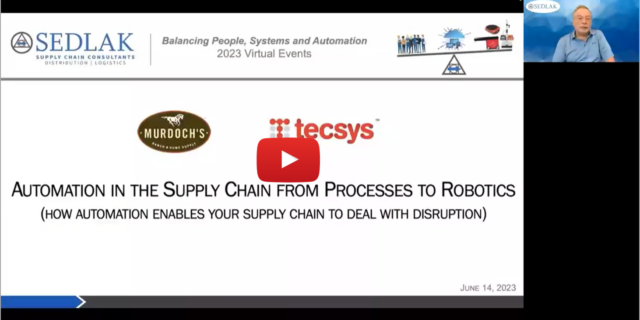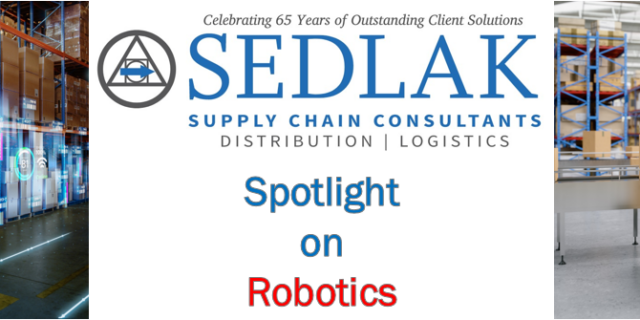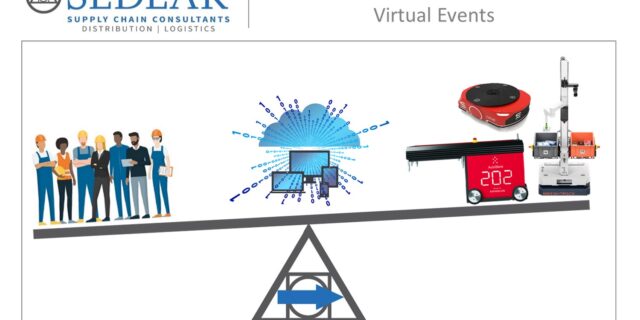Why It May Be Time to Consider a New WMS
March 6, 2018 Topics: Inventory Planning & Optimization, IT SolutionsA Warehouse Management System (WMS) is a software application that supports the day-to-day operations within a warehouse or distribution center, and it is considered an essential component of the modern supply chain. For companies that have put off installing this technology, this two-part series explores the basics: 1) Why you should consider a WMS for your operations; and 2) What you should know if you are considering one.
First, consider each of these scenarios:
- A packaging company uses a “pick to label” method, where the picker is assigned a label and goes off to the appropriate locations to pick the order. It’s not until the picker checks back in with the completed orders that the inventory quantities are updated.
- A retailer using a homegrown, highly customized warehouse management system (WMS) runs batches twice a day to update inventory levels.
- An apparel wholesaler keeps sheets on clipboards at the end of each aisle in its warehouse, noting the location and quantities of every product in the aisle. After each pick, the picker moves to the end of the aisle and manually updates the sheet to deduct the picks. At the end of the day the clipboards are collected and quantities are manually entered into an Excel spreadsheet.
Granted, that last one is pretty “old school,” but still – what’s wrong with these situations?
In the consumer age of “I want it anytime, anywhere,” it is critical that distribution centers enable accurate, real-time inventory tracking and control. If you don’t know what you have or how much or where it’s located, you are miles behind the other guys and putting your customer service in real jeopardy.
Obviously, picking to paper is prone to human error and cannot provide real-time inventory visibility. Product is often stored wherever there is room, and it’s not uncommon for product to be lost altogether. Additionally, tracking inventory on spreadsheets is a labor-intensive and time-consuming task that can lead to both overstocks and stock-outs.
Even if you’re a company running some type of legacy warehouse management software – if it does not allow real-time interfaces, is no longer supported by the provider, or has grown so complex over the years only that one or two people in your organization know how to maintain it, now may be the time to consider a new WM solution.
A well-designed WMS can provide immediate, tangible benefits:
- Real-time inventory visibility and accuracy. You can know exactly how much product is in your facility and where everything is located. Time previously spent searching for “lost” inventory can be reallocated to more productive tasks, and min/max replenishment will be guided with a greater level of precision, reducing capital tied up in excess inventory.
- Elimination of the physical inventory audit. WMS-enabled cycle counting resolves inventory inaccuracies more frequently than the traditional physical inventory audit and can eliminate the costs and downtime of the annual audit altogether. You can group products by category and velocity, weave cycle counting into other warehouse functions such as put away and picking, and achieve greater than 99% inventory accuracy.
- Picking productivity improvement. Having everything in its place makes life easier for your pickers, and batch picking (picking groups of orders at once) and order aggregation methodologies enabled by a WMS can reduce the amount of travel distance/time it takes to pick orders. Task management functionality in a WMS can prioritize rush orders and replenishment activities, better match workers to tasks, and time movement of workers in the facility to drastically reduce inactive time.
- Reporting capability. Need to understand your inbound activity, order profiles, pick lines, SKU activity, work flow, shelf life, stock rotation, yard management, or costs? The dashboards built into WM systems can provide all of that and more in real time. Advanced WM solutions now incorporate predictive analytics to help you meet anticipated demand and understand the impacts of your supply chain decisions.
- Labor management. Most WMS solutions have an add-on labor management system (LMS) which can provide substantial improvements to productivity by establishing and measuring best practice standards for each functional activity in the warehouse.
All of these benefits support one goal – providing the best customer service possible. Having control of your inventory improves order accuracy, reduces stock-outs, and decreases backorders. Maybe it's time you thought about a new WMS.
Now celebrating 60 years in business, Sedlak has been active in the WMS industry since its inception and has supported WMS selections and implementations in hundreds of environments of all sizes and complexities. We focus on overall business requirements and employ seasoned resources with expertise across a variety of applications, industries, and providers to develop best-fit WM solutions for our clients. To learn more, complete the Contact Us form below.







